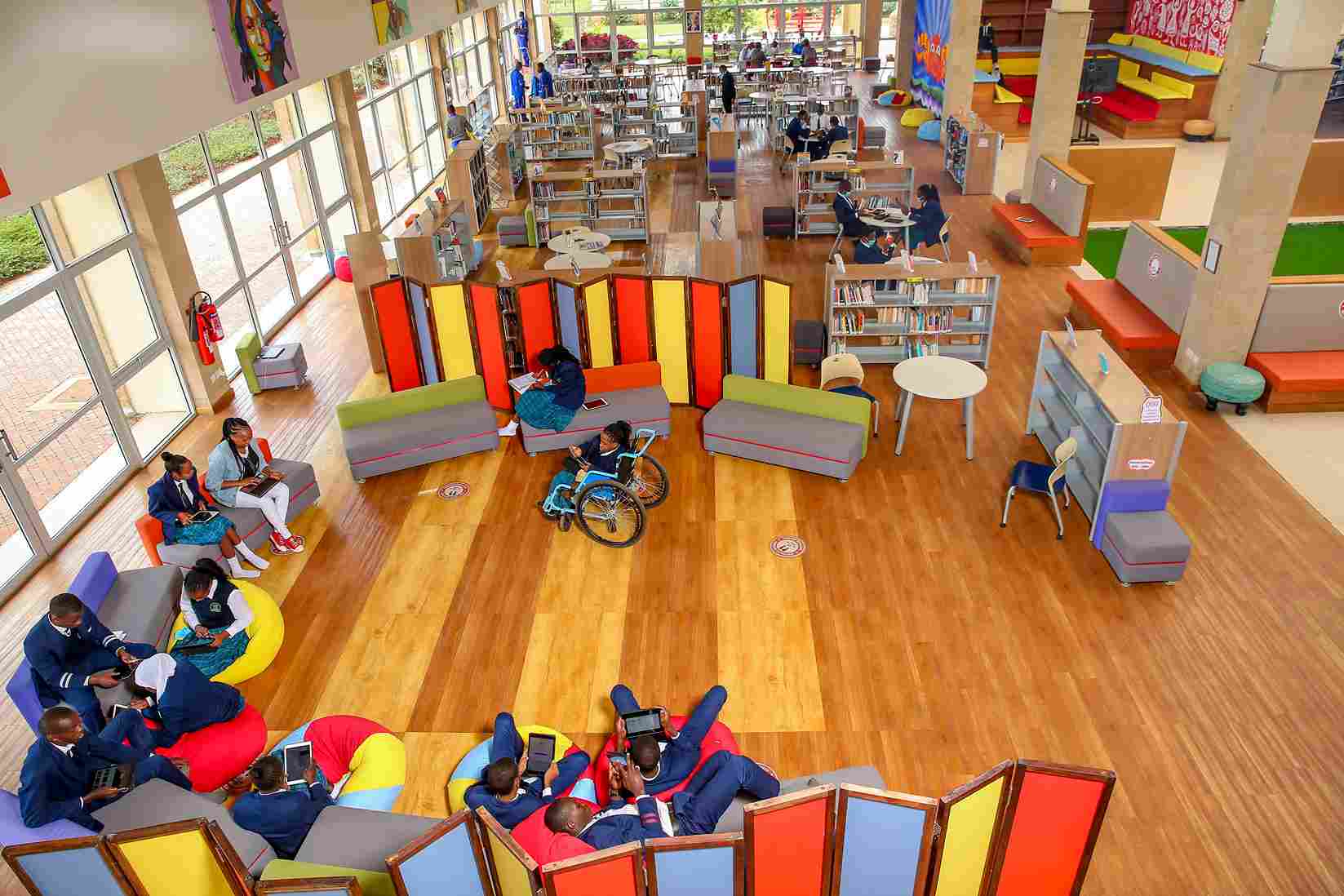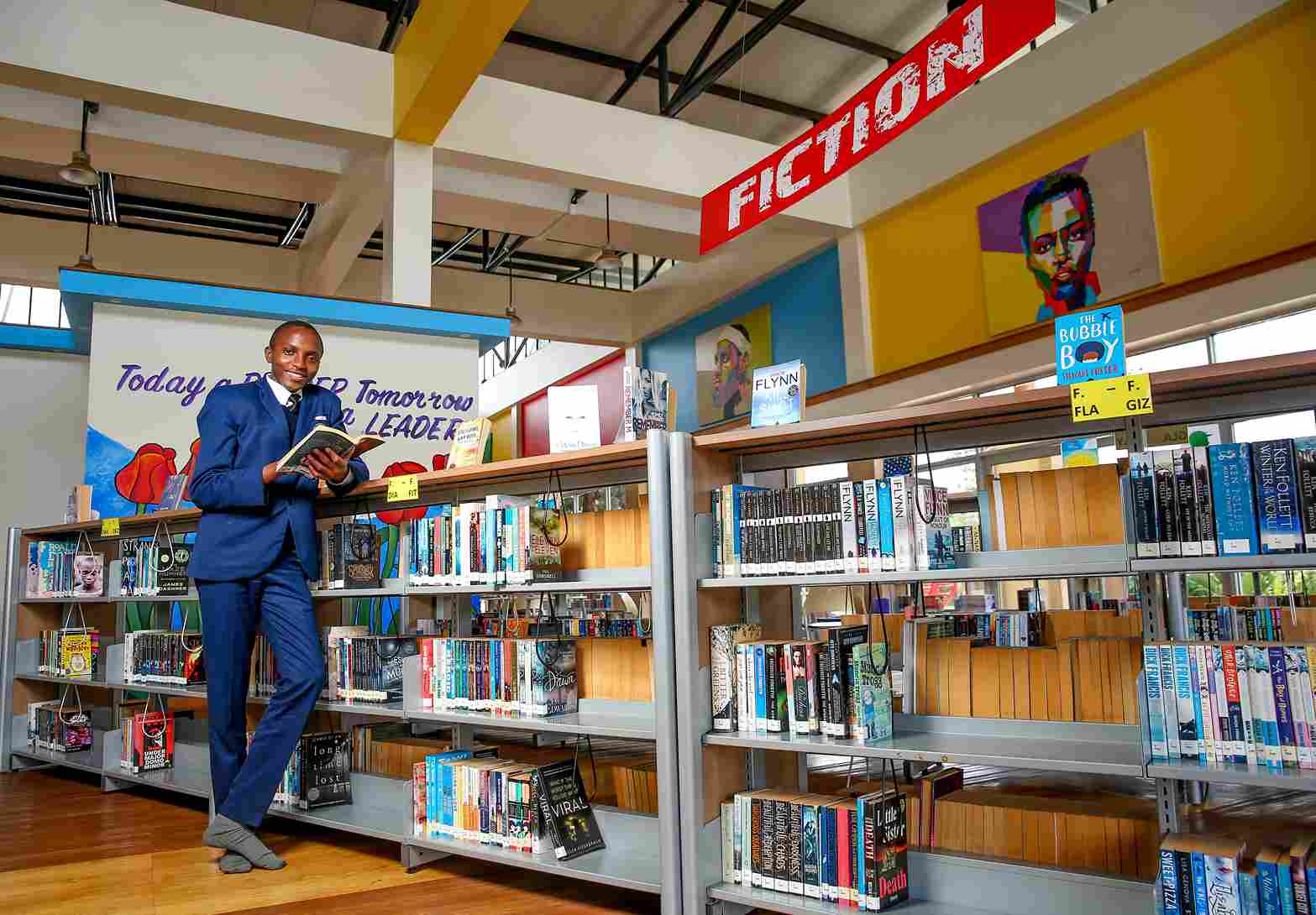As the world marks International Literacy Day on September 8, the M-PESA Foundation Academy has enhanced its learning spaces to build resilience and ensure quality, equitable, and inclusive education.
The International Literacy Day celebrations have taken place across the globe since 1967. The celebration is done to remind the public of the importance of literacy as a matter of dignity and human rights and to advance the literacy agenda toward a more literate and sustainable society.
According to UNESCO, literacy challenges persist with 771 million illiterate people around the world – out of which most women lack basic reading and writing skills. “In the aftermath of the pandemic, nearly 24 million learners might never return to formal education, out of which, 11 million are projected to be girls and young women.”
The organization, in its statement, further added that “to ensure no one is left behind, we need to enrich and transform the existing learning spaces through an integrated approach and enable literacy learning in the perspective of lifelong learning.”
The 2022 edition will be observed under the theme: Transforming Literacy Learning Spaces. According to UNESCO, this is an opportunity to rethink the importance of literacy learning spaces to build resilience and ensure quality, equitable, and inclusive education for all.
This goes in line with the M-PESA Foundation Academy’s strive to ensure that children from diverse communities across Kenya enjoy learning spaces that encourages good performance.
According to Ms Jackline Otula, Head of IB Programmes at M-PESA Foundation Academy, there is increasing recognition that learning spaces enhance students’ performance.
She says the motivation to redesign the M-PESA Foundation Academy spaces was to cater to their students’ needs from diverse backgrounds.
“To realize our ambitious mission of developing transformational leaders for Kenya, people who can stand on their own feet have a voice, guide, and lead this nation to greater frontiers, we meet them at their points of need,” she says during a virtual interview with Khusoko.
“We have students here with albinism. We have students who are in wheelchairs. And for that, we had to make sure that as we structured our learning spaces, we were meeting them at their points of need to be able to cater to them.”
For instance, the school’s resource centre has an elevator to the mezzanine floor, creating accessibility. As a result, inclusivity fulfils its mission and vision.
“And from what we have done with the designing, we have seen that students are vibrant in learning. They don’t feel constricted in any way. They enjoy learning. They’ve developed a love for learning because they don’t feel there are limitations.”
Allan Ngetich, the Learning Resource Coordinator at M-PESA Foundation Academy, shares similar sentiments disclosing that in terms of designing the spaces, the Academy focuses on being inclusive, ensuring every building has ramps.
“The academy has done a lot to ensure learners feel safe and feel included in the learning process where they can explore their full potential,” he says.
M-Pesa Foundation Academy Library
Consequently, since the learning environment plays a significant role in ensuring the quality and extent of learning, the Academy has made worthy investments including e-learning tools like the library. This crucial investment, for instance, saw teachers support students virtually during the coronavirus pandemic. The teachers and students could easily access and utilize the digital library.
Jackie emphasizes that the Academy has created a homely atmosphere describing it as “The greatest ever to make our students feel safe. They feel homely. They feel cared for, and I think that has had an impact on how students perceive life and how they perceive the idea of care.”
With the Academy hosting different age groups, it has had to rethink how it uses colour. Some blocks are painted blue to give a sense of softness and calmness.
“We have also remodelled the classrooms by putting in soft curtains. We have grey as one of the colours. I think it creates that element of calmness.”
“The furniture, it’s a factor of production. In the classroom (you know), it has cost implications, but I think furniture is very comfortable. We don’t have any wooden furniture,” says Jackline.
With the elderly students, their spaces have one standard colour, soft white, that cuts across all the classes.
“We don’t have any reds anywhere because red, by itself, spells danger. But our soft white creates an atmosphere of tranquillity, which I think is very good.”
“When you come to the language acquisition classrooms, which are the foreign language classrooms, we have painted those classrooms the colours of that particular language.




